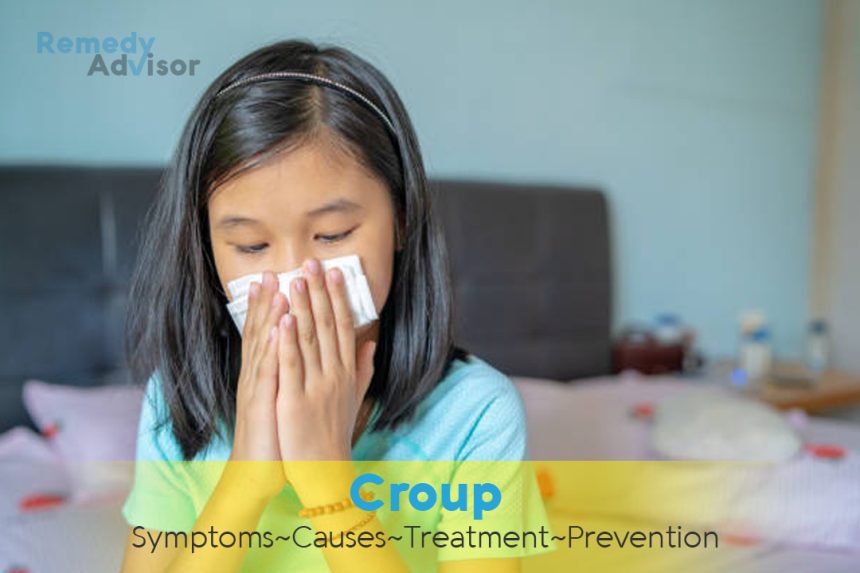What is it
Because its symptoms involve breathing, croup is one of the most upsetting illnesses of childhood but most cases are relatively mild and do not cause any lasting damage. It’s an inflammation of the area just below the voice box that causes swelling of the air passages and difficulty breathing. Croup most commonly affects children younger than three or four years of age, waking them in the middle of the night with rasping breaths and a barking cough. It can affect children as young as three months or as old as six years. Most cases can be safely and effectively managed at home, and symptoms usually subside within three to seven days. Some children are prone to recurring bouts of croup and seem to get it with any respiratory illness.
Symptoms
- Shrill, wheezing inhalations.
- A harsh, barking cough (sometimes described as “seal-like”) that often occurs in sudden and spasmodic bouts.
- Fever (usually less than 102°F, though some children will not have any fever).
- Hoarseness.
- Symptoms typically appear or worsen late at night and may continue for several consecutive nights.
What causes it
Croup is usually caused by one of several viruses, which are spread from child to child usually during the fall or winter months. Typically, a child will be sick for a day or two with a cold or a flulike illness before excessive secretions and swelling in the child’s small airways lead to labored breathing and the characteristic barking cough. In other cases, symptoms come on very suddenly, perhaps in response to an allergy. In general, the younger the child, the more severe the symptoms. By age seven, children’s respiratory tracts are usually large enough so that croup is uncommon.
What if you do nothing
Symptoms should be monitored closely; although croup rarely is serious, it can become severe and lead to potentially life-threatening airway obstruction.
Home remedies
Even though the harsh and troubled breathing may be upsetting to both parents and child, croup is almost always easily treated at home.
Comfort your child
It’s important that you and your child stay calm. Agitation and crying can make symptoms worse. Your child may prefer to sit up or lie down whichever position makes it easier for the child to breathe and relax should be encouraged.
Soothe the throat with warm mist
Run the bathroom faucets and shower with hot water to create a steam room effect. Keep the child in the bathroom for 20 minutes or so, perhaps by reading to him or her, until breathing becomes easier. Don’t place the child over a steaming teapot or hot-steam vaporizer because of the risk of accidental bums.
If heat does not provide relief, try cool air
Use a cool-mist vaporizer or open the bedroom windows and let the child breathe cool air. This sometimes provides relief if heat does not work. Many parents have found their child’s breathing was improved after a nighttime car ride to the emergence’ room. The moist night air streaming through the open windows seems to break the cycle of labored breathing.
Keep the bedroom moist
Run a cool-mist vaporizer in the bedroom for several days, until the cough and other symptoms subside. If you don’t have a vaporizer, try hanging damp sheets or towels in the room to help keep it moist.
Reduce fever
Acetaminophen is effective for reducing fever.
Drink plenty of clear fluids
Encourage your child to drink plenty of water, tea, ginger ale, apple juice, or other clear liquids to prevent dehydration and to help moisten the throat and loosen mucus. Avoid milk, since it can thicken the mucus, so coughing it up becomes harder.
Prevention
Little can be done to prevent croup. The viral infections that cause it are easily transmitted from one person to the next. Avoiding contact with infected children will help to minimize your child’s chances of contracting croup, although most children who get viral respiratory infections don’t get croup.
Children who are prone to recurrent bouts of croup may benefit from the use of a cool-mist vaporizer whenever they have a respiratory infection. These children will eventually out- grow it, usually by age seven.







